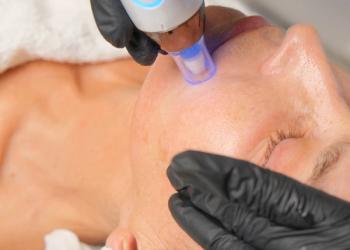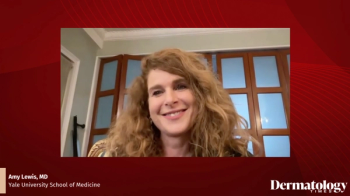
Study: 730 nm Picosecond Laser for Treatment of Lentigines
A recent study delved into how well the 730 nm picosecond-domain laser could treat facial and non-facial lentigines in patients.
A prospective, IRB-approved study published in the
There were 20 patients with Fitzpatrick skin types II-IV enrolled in the trial and they received 4 treatments from the laser. Photos were taken before and after treatment then assessed by blinded reviewers at 4- and 12-week follow-up visits by a 5-point clearance scale, and patient satisfaction was measured on a 5-point scale. An investigator Global Improvement Score (IGIS) was evaluated with an 11-point clearance scale at the 4- and 12-week follow-up, also. The patients pain level was measured from 0 (no pain) to 10 (extreme pain) and the histology of 730 and 532 nm picosecond pulses was compared to 755 and 532 nm nanosecond pulses.
Out of the 20 patients enrolled, 16 completed all the study visits, with a mean age of 63 years and 75% were female and 25% were male. These 16 patients had 118 treatment areas, each of which included 1 to 20 lesions and 30 body regions were studied (arms (6), hands (16), scalp (1), forehead (2), face (3), and back (2)). The spot sizes ranged from 2 to 5 mm diameters were used with fluences ranging from 0.8 to 4.0 J/cm2.
The mean pain score was 3.6 out of 10 for each of the 4 treatments that the patients received. When the photos of the treated skin were assessed by the blind investigators, only 1 photo at 4 weeks were misidentified as a post treatment photo, leading to 99% of randomly paired 4-week posttreatment images and 100% of 12-week posttreatment images were correctly identified.
The mean scores of IGIS were 6.7 at the 4 week follow up and 7.0 at the 12 week follow up visits with 76% and 73% of patients respectively were satisfied to highly satisfied. The mean clearance score for the 118 treatment areas was 3 of 4 at follow up visits. At the 12 week follow up, 36% of the 118 treatment areas has a clearance score of 4 and 38% had a score of 3. The adverse event (AEs) experienced were considered typical by study authors and included erythema, edema, dryness, crusting, and itching.
Histology showed diffuse, focal epidermal vacuolization ~5–10 µm in diameter and mild extravasation of erythrocytes with 730 nm picosecond pulses, according to the study authors, while diffuse epidermal vacuolization was observed in the joining of vacuoles (~20–100 µm), junctional clefting and mild extravasation of erythrocytes with 755 nm nanosecond pulses.
“Picosecond pulses of the wavelength of 532 nm produced diffuse, focal epidermal vacuolization and larger dermal vacuoles to depths of 500 µm, while 532 nm nanosecond pulses produced diffuse epidermal vacuolization with coalescence of vacuoles and marked dermal hemorrhage,” wrote study authors.
The 730 nm picosecond-domain laser for the clearance of lentigines has shown potential for treatment according to the study, which good clearance, safety, and patient satisfaction in patients with skin type II-III. The histology found the laser produces excellent selectively for pigment with minimal disruption of the dermal-epidermal junction and may reduce healing times or AEs, according to the study authors.
Further investigation needs done on darker skin tones, according to the study authors.
Reference:
1. Kauvar ANB, Sun R, Bhawan J, et al. Treatment of facial and non-facial lentigines with a 730 nm picosecond titanium: Sapphire laser is safe and effective. Lasers in Surgery and Medicine. n/a(n/a). doi:10.1002/lsm.23450
Newsletter
Like what you’re reading? Subscribe to Dermatology Times for weekly updates on therapies, innovations, and real-world practice tips.

















